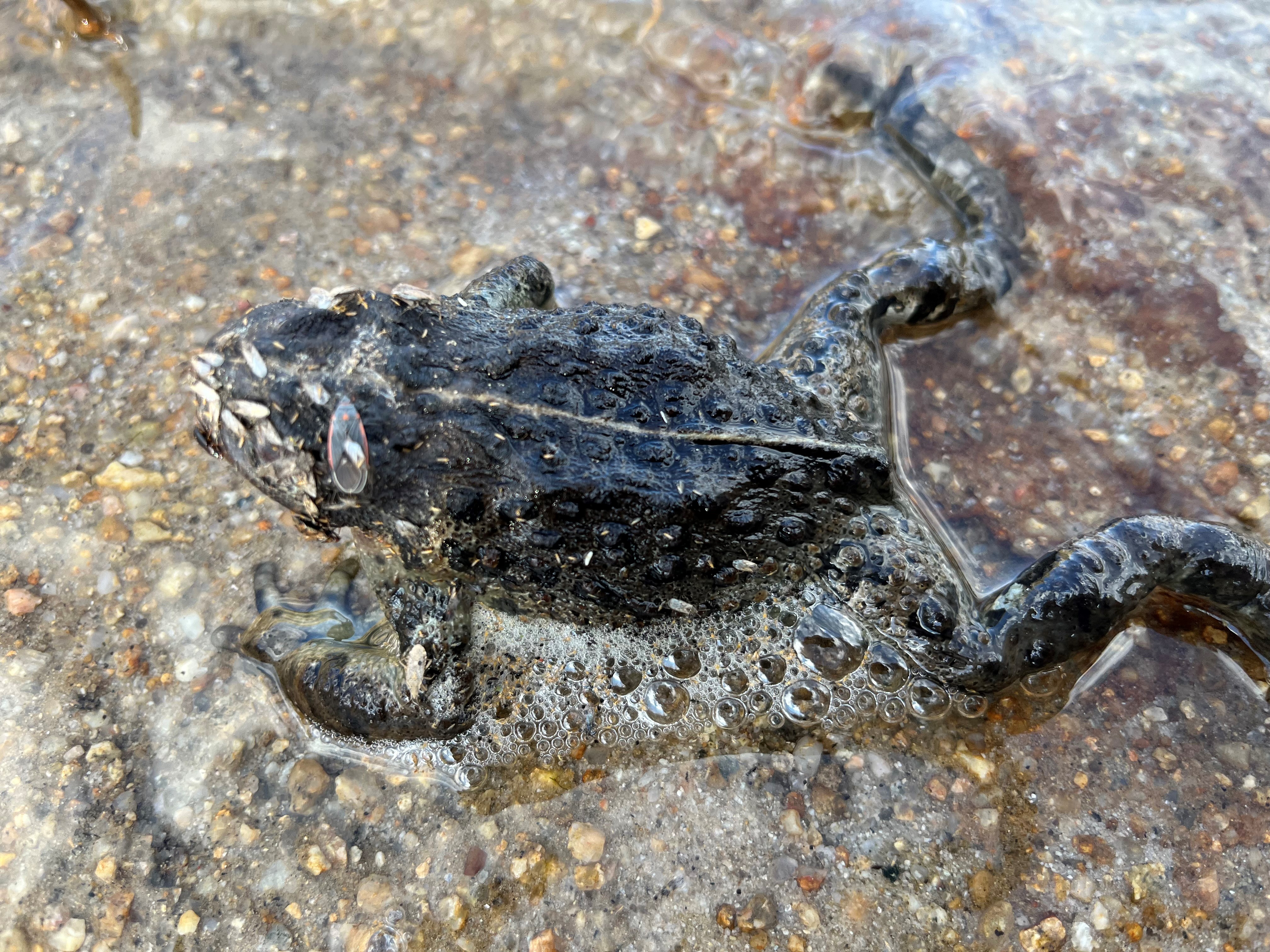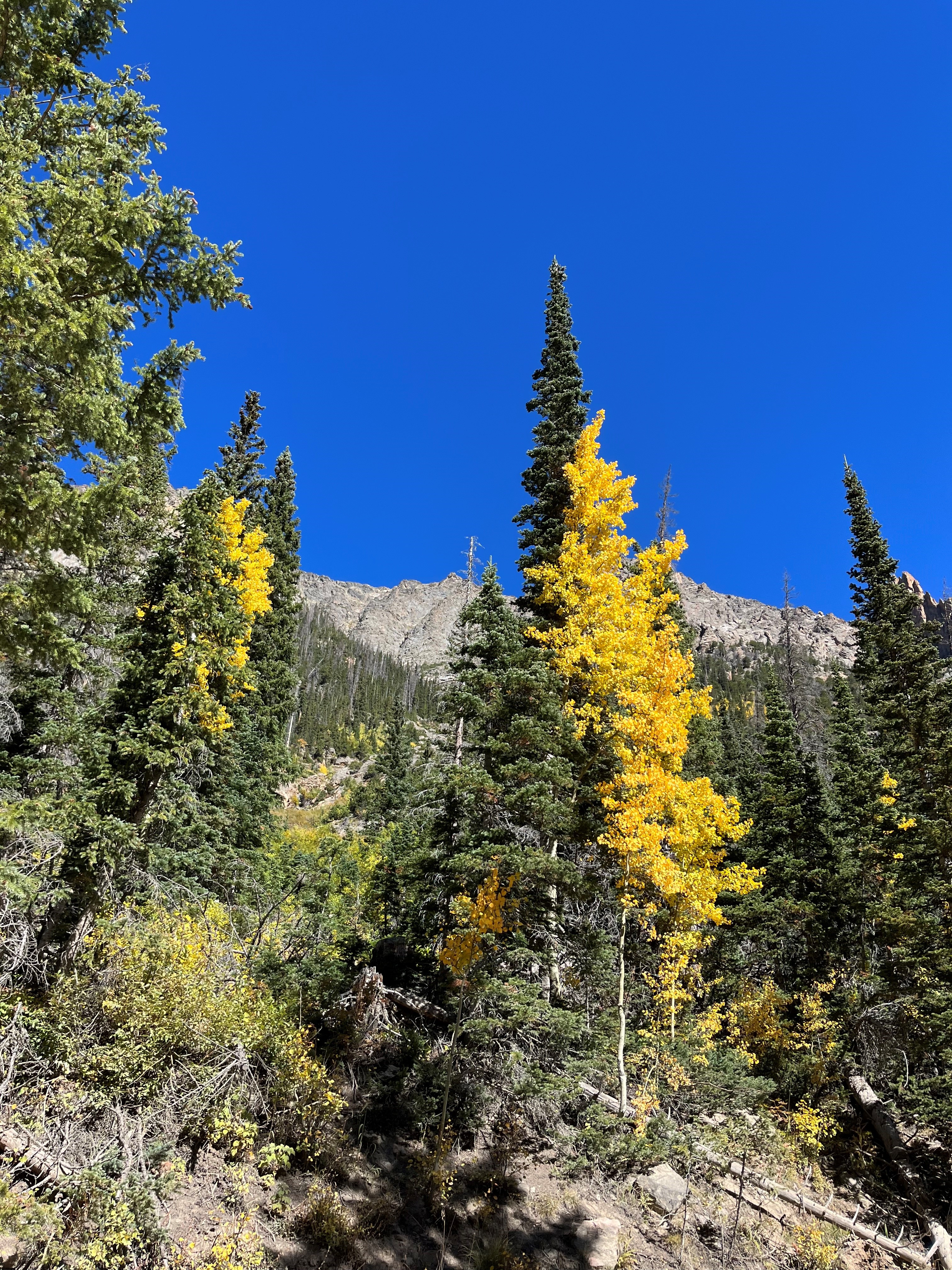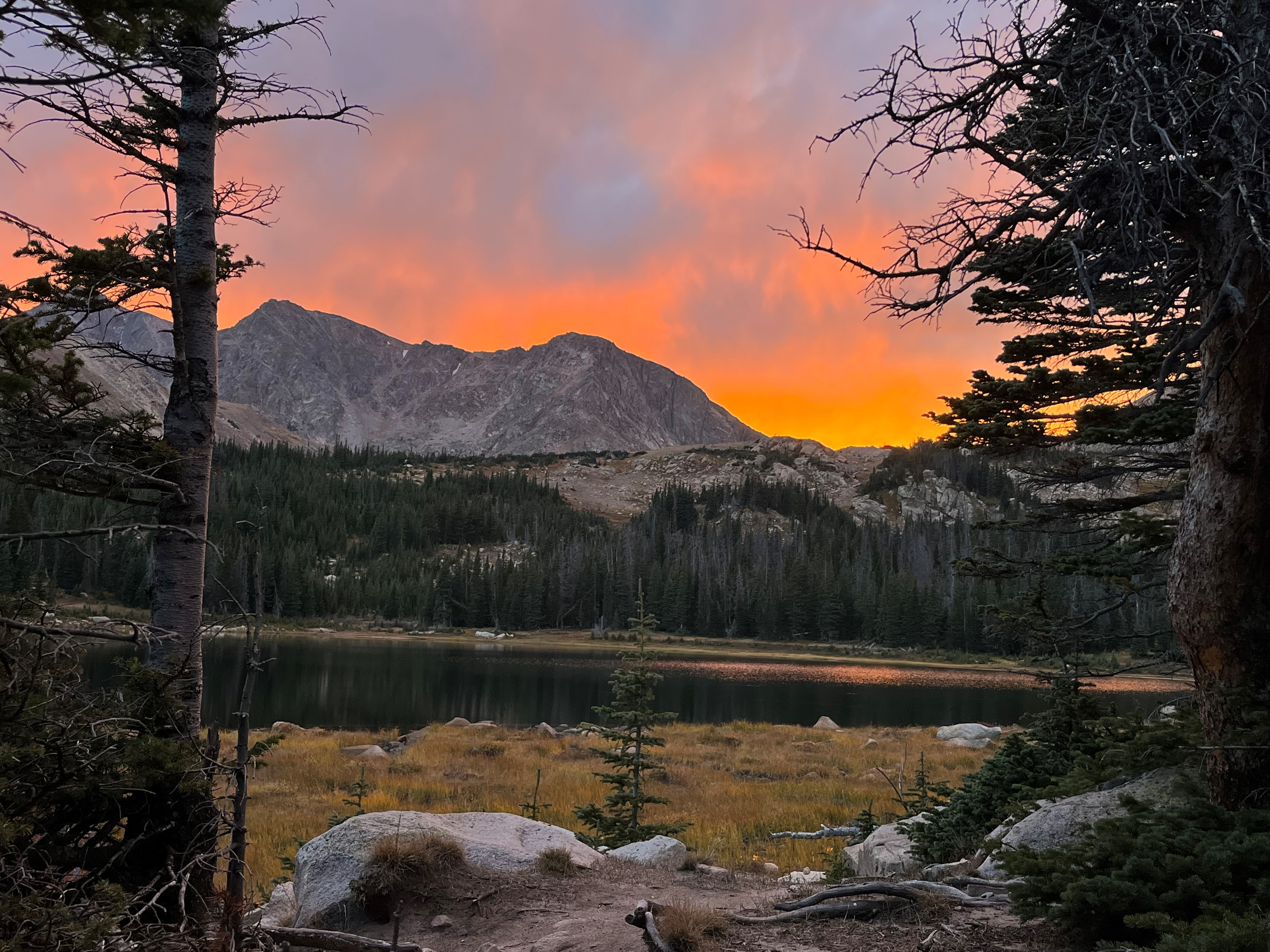It's Always Halloween When You Work on Toads
As first appeared in USGS NTK:
My late fall trek to Lost Lake in Rocky Mountain National Park to look for evidence of toad breeding is beautiful. The aspen leaves are golden. The air is downright cold at the 7 am start. The ten-mile hike starts downhill but soon angles up and continues up for the next eight miles. That is a lot of time to think about the end of another summer field season and about how few toads we observed. I can’t help but wonder if our field techs somehow overlooked breeding and egg masses? Or was it because it didn’t happen? It was only early October, but I settled in to a decidedly grim and early Halloween-edgy mood that was resistant to the bright blue of the sky and clung to me like a veil the rest of the hike.
Not a soul was camping at Lost Lake. The lake was still with only a few ravens providing their opinions on campers and, no doubt, toad conservation. All senses narrowed to look for a toadlet or an adult toad as I poked through the drying grasses and shrubs around the lake, and hopefully scanned the water’s edge. I could feel, more than see, the daylight dwindling.
On the far side of the lake I saw her, sitting on the shoreline. I stopped short as I saw the stiffness of her body and the blank white stare of her eye. The toad was dead. But hadn’t been dead long. I pulled out the “tools of the trade” and measured her, checked her for an identifying passive integrated transponder tag, and swabbed her to test for the amphibian chytrid fungus. She was not marked, and I only assumed she was a female based on size. I recorded a few bits of environmental data, and although firm-ish, the toad was in no condition to travel for further examination. I felt a chill and realized that the sun was completely gone. I left her on the shore with a quick prayer to the amphibian goddess and a furtive look around for moose.
Boreal toads, like the one I found, have been on the decline in Rocky Mountain National Park (RMNP), and the southern Rocky Mountain region for a while. One contributor to these declines is the amphibian chytrid fungus that thickens the skin, blocks osmosis (water intake), and eventually leads to heart attack and death. As a research zoologist, my colleagues and I have been working on amphibians in RMNP in northern Colorado for three decades. Our work ranges from questions of immediate interest to the National Park Service, like “how are the wood frogs doing with the hydrological changes on the west side of the park,” or “why are boreal toads declining” to overall management questions like, “what is the status of the amphibian species in the park and what factors may affect persistence?”
Although there are some bad days like my autumn hike to Lost Lake, there are glimmers of hope, or at least of gains in information that we might use towards amphibian conservation. We are currently working on a paper using three decades of data on chorus frogs, salamanders, and wood frogs in RMNP to examine changes in persistence over time across the landscape of the park. This work also considers a variety of mechanisms (e.g., visitor use) that may affect the probability of persistence and thus provides RMNP with information that can contribute to conservation decisions about the management of the park’s amphibians.
Erin Muths is a research zoologist at the Fort Collins Science Center and is a principle investigator for the Amphibian Research and Monitoring Initiative for the Ecosystems Mission Area. Her lab has studied boreal toads and other amphibians in the Rocky Mountains for more than 25 years. She is going to be sorcerer for Halloween.



